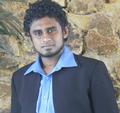Cited By
View all- Das DChaturvedi MArora MDikshit SPadole V(2024)A Reliability Study of the Load Distribution Percentage While Walking Using Curalgia Feet Sx Smart InsolesCureus10.7759/cureus.68232Online publication date: 30-Aug-2024
- Ono SNinomiya NKanai H(2024)Haptic Feedback to Reduce Individual Differences in Corrective Actions for Skill LearningCompanion Proceedings of the 26th International Conference on Multimodal Interaction10.1145/3686215.3690158(16-20)Online publication date: 4-Nov-2024
- van Rheden VMontoya MElvitigala DMeschtscherjakov AMueller FKostakos VKay JHoang T(2024)Multimodal Sports Interaction: Wearables and HCI in MotionCompanion of the 2024 on ACM International Joint Conference on Pervasive and Ubiquitous Computing10.1145/3675094.3677560(952-955)Online publication date: 5-Oct-2024
- Show More Cited By




